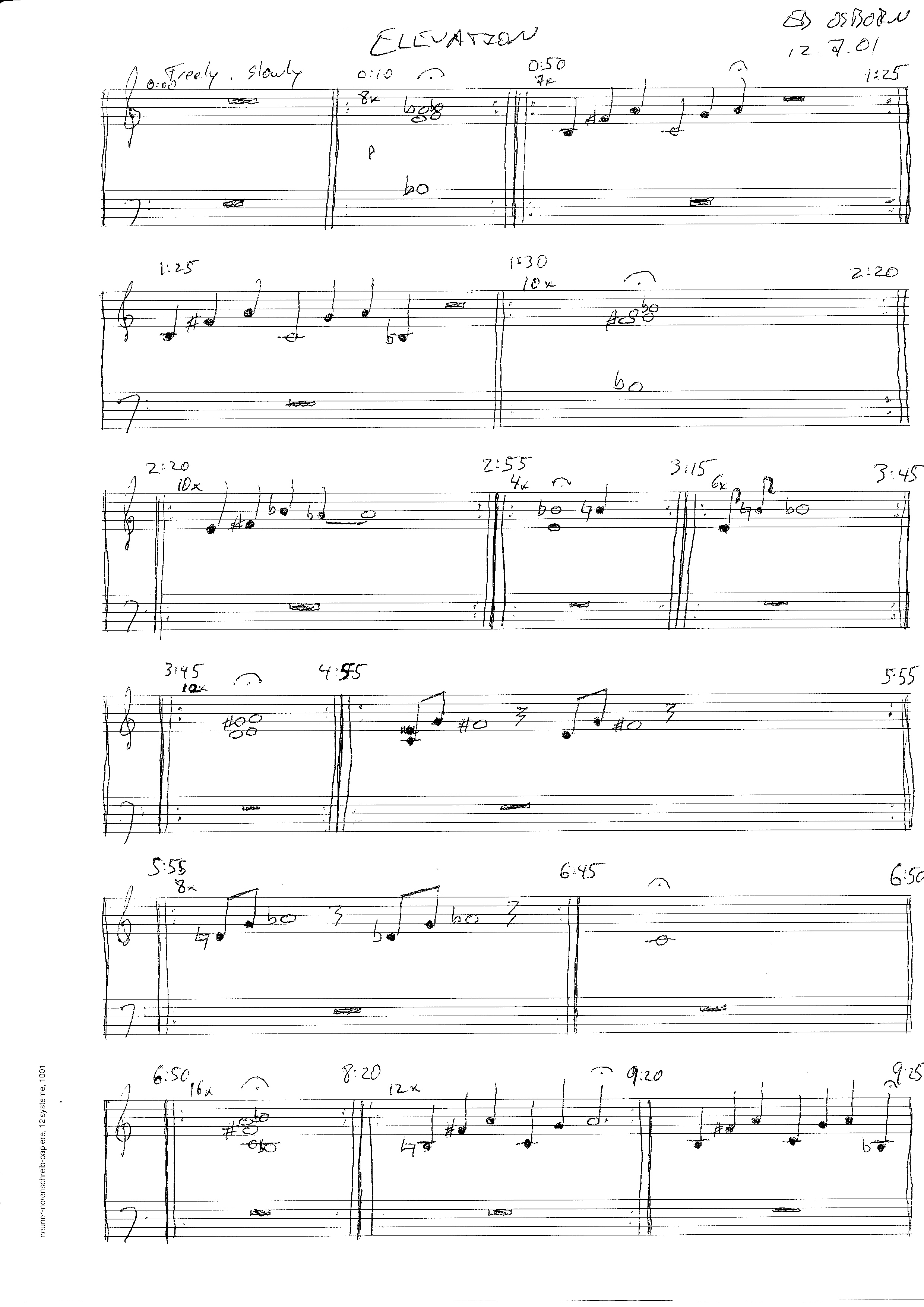
Carillon Concert with Electronics
July 15,
2001 at 3 p.m.
Jeffrey Bossin, Carillonneur, Berlin
Electronics: Folkmar Hein, Sascha Kranz and Daniel Teige
Electronic Studio of the Technical University of Berlin
Programm
I.
Vox Veterrima (1988) Ricardo Mandolini
With Jeffrey Burns, midi-keyboard
II.
Music for Carillon no. 4 (1961) John Cage
III.
Elevation (2001) World premiere Ed Osborn
IV.
Vox Veterrima (1988) Ricardo Mandolini
With Jeffrey Burns, midi-keyboard
Organized by
CarillonConcertsBerlin in cooperation with the Electronic Studio
of the Technical University of Berlin
and with the support of the Haus der Kulturen der Welt and the
Initiative neue Musik Berlin e. V.
Ed Osborn was born in
1964 in Helsinki, Finland. He is a sound designer and composer
from California and studied at Wesleyan University, Connecticut (diploma 1987) and Mills College, California
(diploma 1993). He has performed, exhibited, lectured and held
residencies throughout the United States, Canada, Europe,
Australia, New Zealand, and South America. The recipient of many
awards including a DAAD Artists-in-Berlin Stipendium in 2001 and
a Guggenheim Fellowship, he is represented by the Catharine
Clark Gallery in San Francisco and is on the faculty of the
Visual Art Department at Brown University. Ed
Osborn's sound art pieces take many forms including
installation, sculpture, radio, video, performance, and public
projects. His works combine a visceral sense of space, aurality,
and motion with a precise economy of materials. Ranging from
rumbling fans and sounding train sets to squirming music boxes
and delicate feedback networks, Osborn's kinetic and audible
pieces function as resonating systems that are by turns playful
and oblique, engaging and enigmatic.
